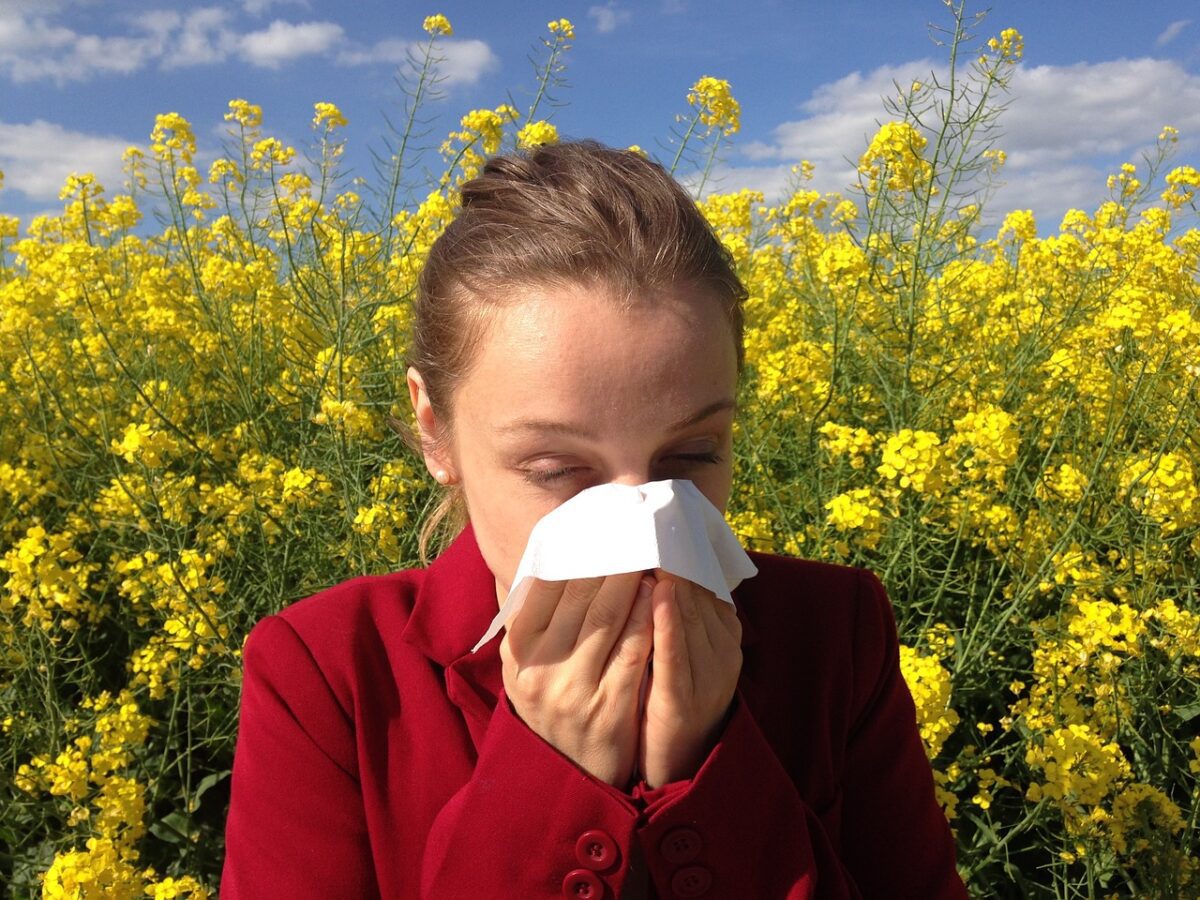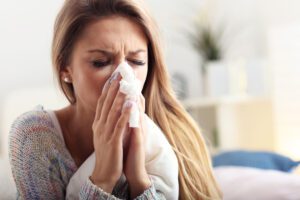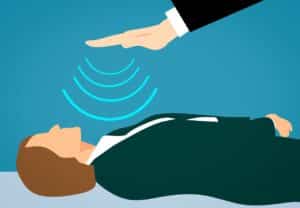Your immune system is in charge of protecting your body from harmful pathogens such as bacteria and viruses. There are situations in which your immune system will mount a defense against substances that generally do not pose a danger to the human body.
Some of these substances are known as allergens, and an allergic reaction happens when your body reacts to allergens. Your immune system develops allergies in response to a material it identifies as a potentially hazardous “invader.”
Below, we’ll look at 7 of the most common allergies and how to treat them.
7 Most Common Allergies And How To Treat Them
Pollen
Hay fever, or seasonal allergic rhinitis, is an allergic reaction to pollen. It causes inflammation and swelling of the nasal lining and the eye’s protective tissues (conjunctiva).
You can lessen your symptoms by avoiding pollen. When pollen levels are high, stay indoors, close your windows, and use air conditioning. Ask your doctor about immunotherapy (allergy shots) to treat your pollen allergy.
Foods
Food allergies develop when the body produces a specific antibody toward a particular food. An allergic reaction starts within minutes of ingesting the allergenic food, and the symptoms might be severe.
Adults’ most frequent food allergies are shellfish, peanuts, and tree nuts. Common food allergies for kids also include milk, egg, soy, wheat, shellfish, peanuts, and/or tree nuts.
It is critical to avoid eating items that induce allergic reactions. If you (or your child) have a food allergy, your doctor may advise that you always carry injectable epinephrine (adrenaline).
Insect Bite/Sting
Normal reactions to a bee sting include pain, swelling, and redness at the sting site. A big local reaction is characterized by swelling that goes beyond the site of the sting.
For a bad reaction, the treatment is epinephrine (adrenaline).
See a board-certified allergy/immunologist for a skin and blood test to confirm your allergy to bee venom if you have experienced an allergic reaction to bee stings. If venom allergy is confirmed, venom immunotherapy may be an option. This will lessen the likelihood that a subsequent sting may induce a severe reaction.
Molds
Molds are microscopic fungi (such as Penicillium) whose spores float through the air like pollen. Mold is a common cause of allergies.
It can also be found outside in the grass, leaf piles, hay, mulch, and under mushrooms.
Medication may be used to alleviate nasal/ocular and chest problems. Immunotherapy may be considered if avoidance and medication are insufficient to treat your symptoms.
Dust Mites
Dust mites are microscopic organisms that inhabit dust and the fibers of pillows, mattresses, carpets, and upholstery. They thrive in warm, humid environments.
Medication may be used to alleviate nasal/ocular and chest problems. Immunotherapy may be indicated if avoidance measures and drugs cannot treat your symptoms.
Animal Dander
The proteins secreted by sweat glands in an animal’s skin are shed as dander, and the proteins in an animal’s saliva can trigger allergic reactions.
Avoidance techniques are less effective than removing the pet from the home.
Due to the reluctance of many individuals to do so, second-best precautions include keeping your pet out of your bedroom, utilizing air cleaners with HEPA filtration, and often cleaning your pet (cat or dog).
Medication may be used to alleviate nasal/ocular and chest problems. Immunotherapy may be indicated if avoidance measures and drugs cannot treat your symptoms.
Latex
Some individuals acquire a latex allergy after repeated exposure to latex. Rubber gloves, such as those used in surgery or for household cleaning, are a leading cause of this reaction.
The first step in treating latex reactions is to remove the offending latex product. You must wear a Medic Alert® bracelet and carry an emergency epinephrine kit if you have a latex allergy. All procedures must be performed in a “latex-safe” manner.








